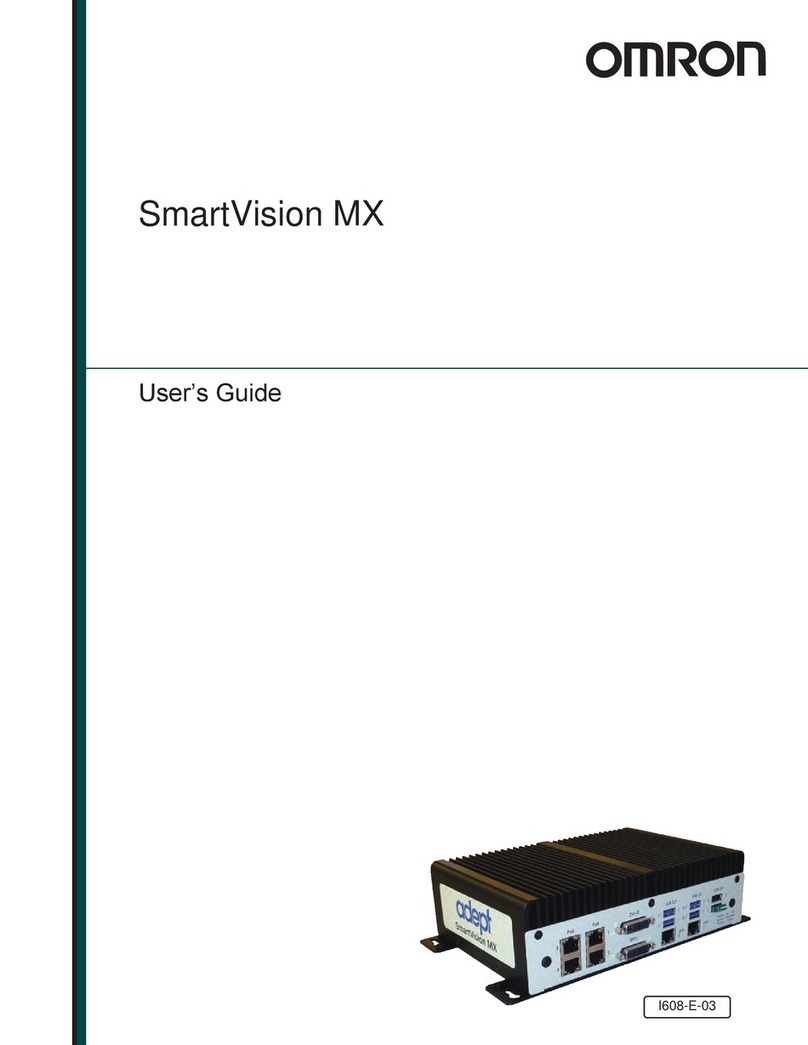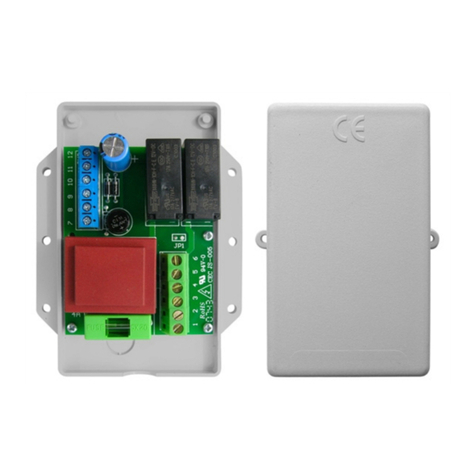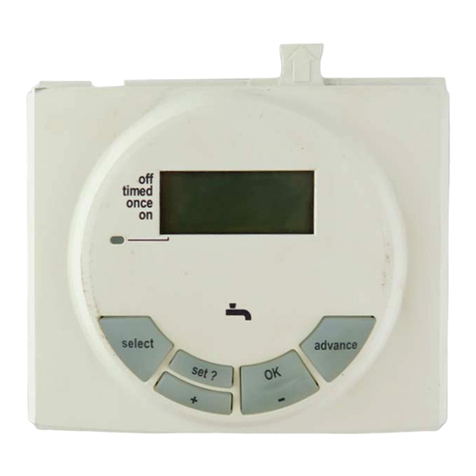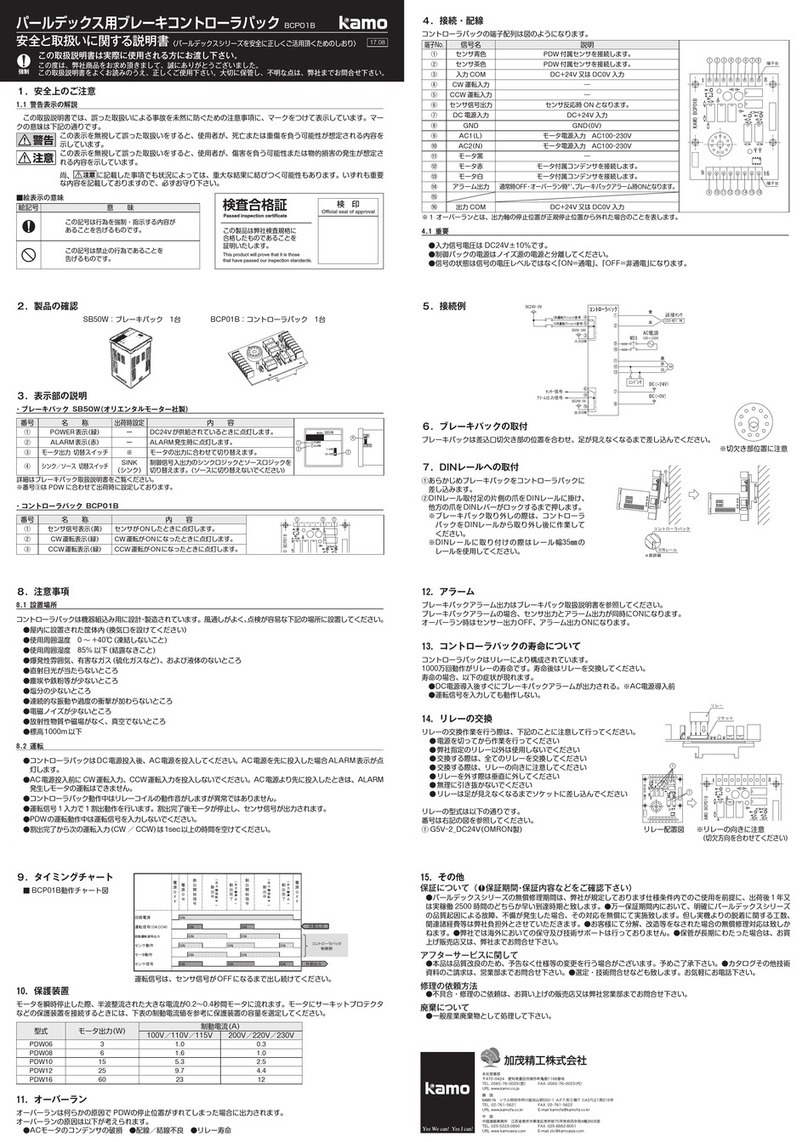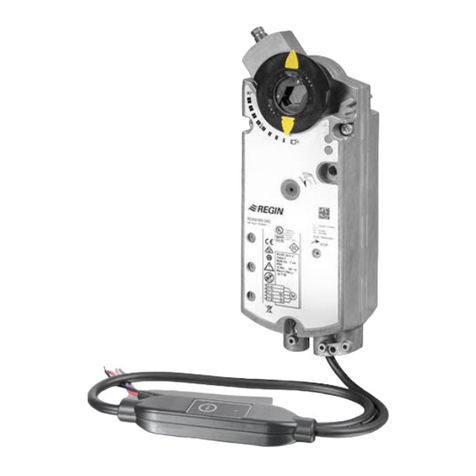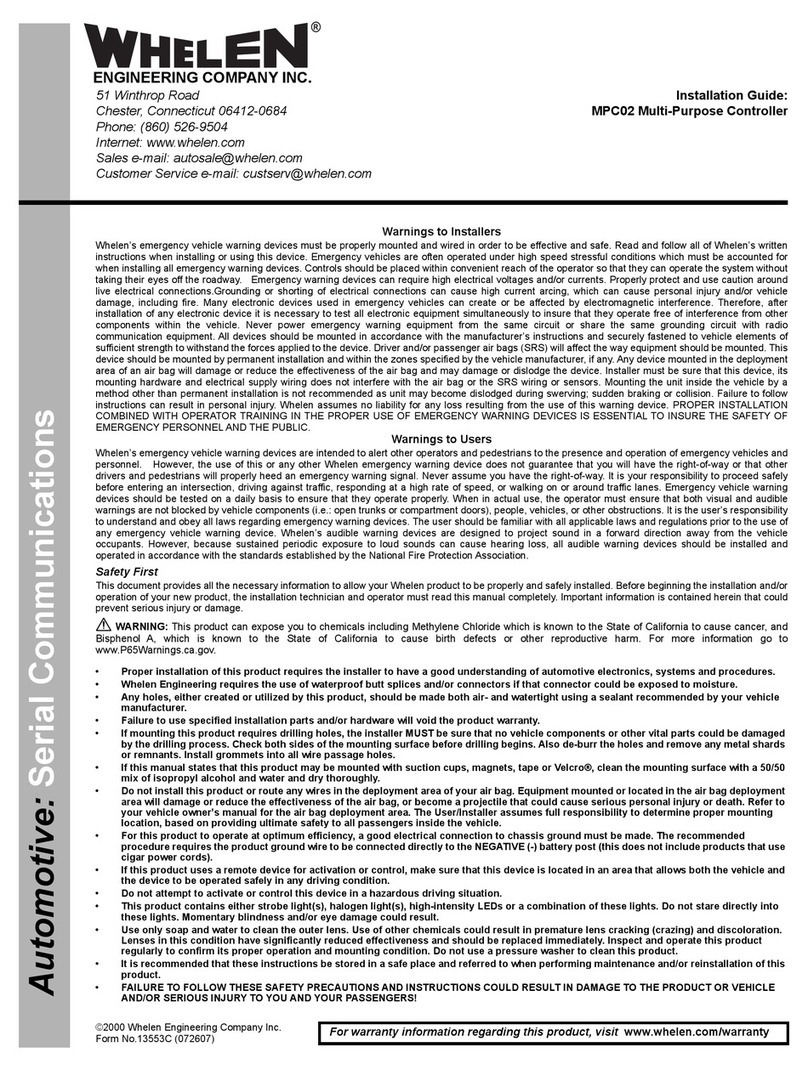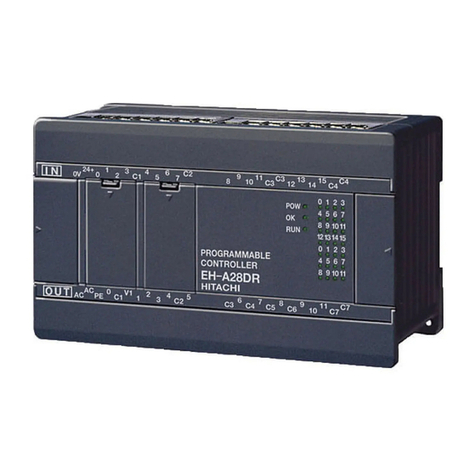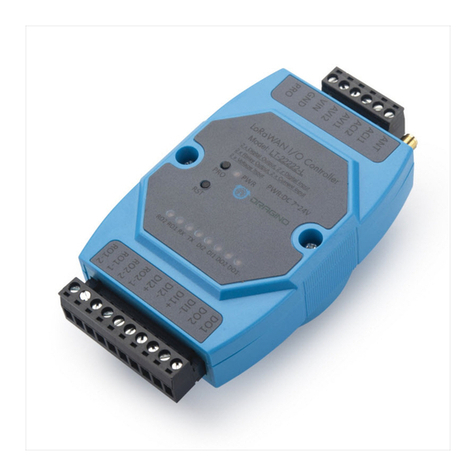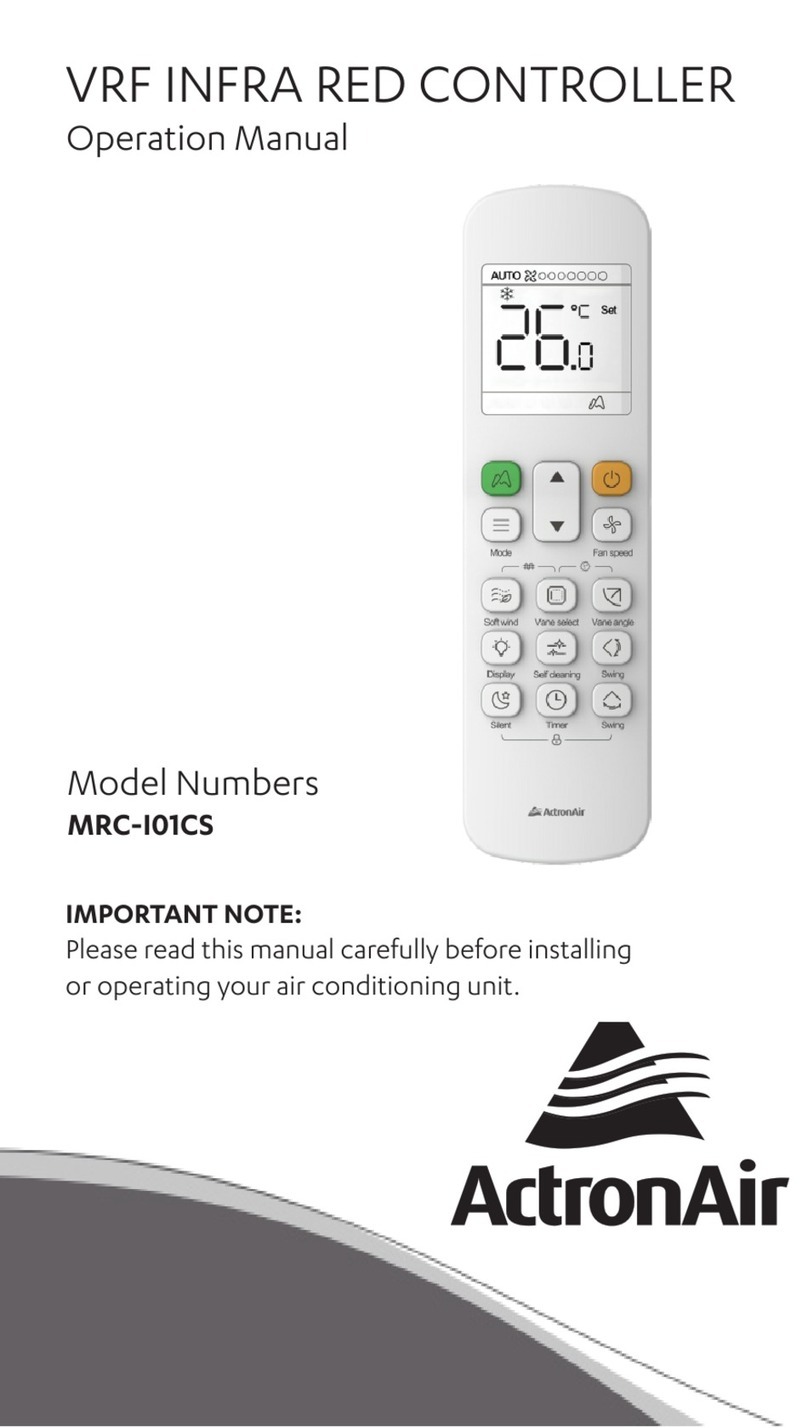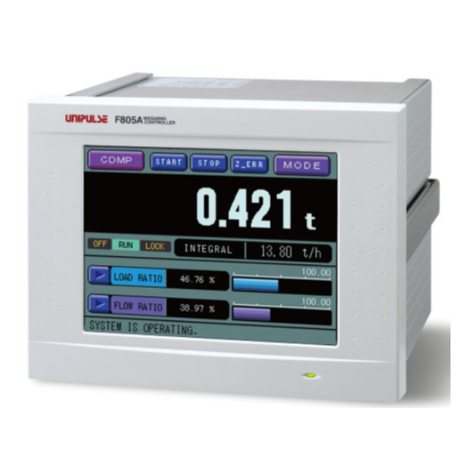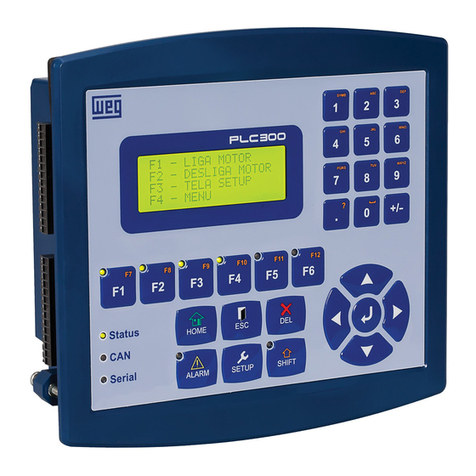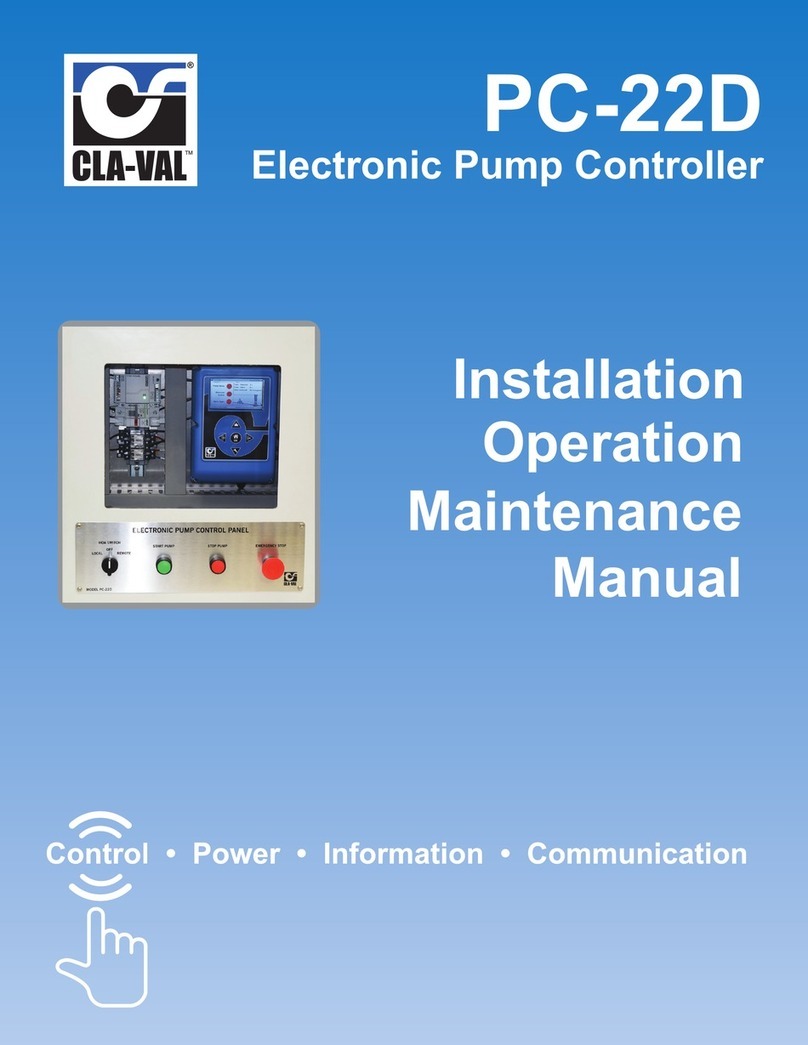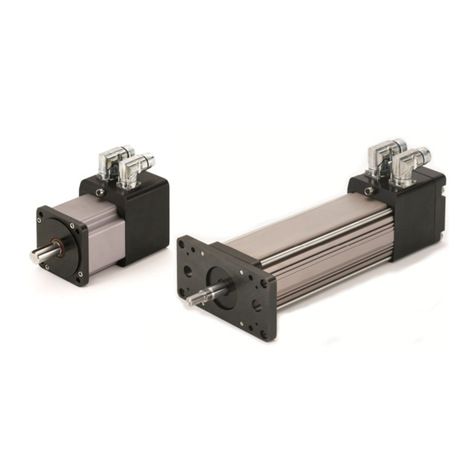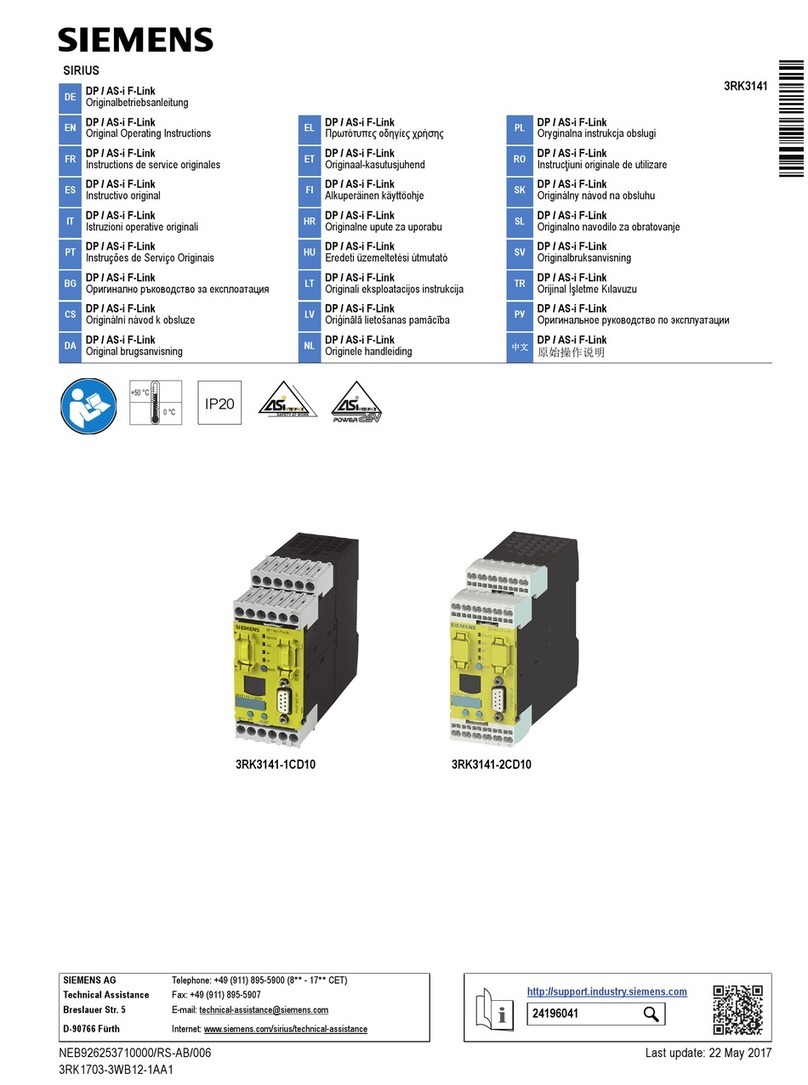Idegis D-10+ User manual

SALT ELECTROLYSIS SYSTEM
D-10+
EN
D-18+
D-25+
D-40+
integrated pH/ORP controller
OPERATION MANUAL
D-40


INDEX
1.- TECHNICAL SPECIFICATIONS …………………….…………
1.1. Dimensions…..……………………………..……………..
1.2. Power supply specifications …………………………….
1.3. Electrolysis cell specifications …………………………..
1.4. pH controller specifications ………..…………………...
1.5. ORP controller specifications ………………………...…
1.6. pH/ORP electrode specifications …….…………………
2.- INSTALLATION INSTRUCTIONS ……………………………..
2.1. Power supply ……………………………………………..
2.2. Electrolysis cell …………….…………………………….
2.3. pH/ORP electrodes ……….……………………………..
2.4. Electrical connections ……………………………………
3.- SYSTEM DESCRIPTION …………….…………………………
3.1. Power supply description ………………………………..
3.2. Remote control……………………………………………
3.3. Electrolysis cell description……………………………...
4.- START-UP …..………………………………………………..…..
5.- OPERATION …………………………………………………......
5.1. Electrolysis system…………………………………….…
5.2. Integrated pH controller………….……….………………
5.3. Integrated ORP controller …………….……….………...
5.4. Alarm and system messages …………….……………..
6.- MAINTENANCE ……...…………………………………………..
6.1. Chlorine level control in the pool …….……..………….
6.2. Maintenance of the electrolysis cell …..………………..
6.3. Salt additions ………………………..……………………
6.4. pH electrode calibration ..……………………………….
6.5. ORP electrode calibration ……………………………….
6.6. Maintenance of the pH/ORP electrodes ……………….
4
4
4
5
5
5
5
6
6
8
10
10
12
13
16
17
18
19
19
23
24
27
29
29
30
30
31
33
34

7.- PRACTICAL ADVICES ………….……………………………
8.- TROUBLESHOOTING …………….……………………………
9.- WARRANTY ….…………….…………………………….……...
35
36
38
2

Dear customer:
Thank you very much for purchasing our SALT ELECTROLYSIS SYSTEM for the treatment
of swimming pool water. IDEGIS SALT ELECTROLYSIS SYSTEMS have been designed and
manufactured taking into account the already existing specific necessities in the treatment of
the swimming pool water. Their main features are handling simplicity and easy installation,
together with low maintenance costs.
Before installing and using the equipment, please read this Operation Manual carefully and
keep it for future reference.
DESCRIPTION OF THIS OPERATION MANUAL
This Operation Manual describes the operation of model D-40; as well as models with
INTEGRATED PH/ORP CONTROLLER, D-10+, D-18+, D-25+ and D-40+.
UNPACKING
Verify the following elements of the installation kit have been included in the package, and
read the whole Operation Manual before starting the installation of the unit.
Supplied elements:
Power supply (with integrated pH/ORP controllers ).
Electrolysis cell.
Models D-10+ ... D-25+.
Models D-40(+)
Calibration solutions [pH=4.0 (red) / pH=7.0 (green) / 470
mV ORP].
H-035 pH-electrode (blue).
PE holder 12mm -1/2”G for pH/ORP electrode insertion (x
2).
Connector CEE22 for dosing pump (dosing pump and
accessories not supplied).
RX-02 ORP electrode (red)
.
BEFORE INSTALLATION:
Before installing the IDEGIS SYSTEM or performing any
maintenance task, please disconnect the 220 Vac voltage
supply:
oSystem must be installed by qualified personnel, in
accordance with all local and national electrical regulations.
oVerify that the supply voltage corresponds with the one
indicated in the label located in the left side of the unit.
oCheck all the electrical connectors are well tightened to avoid false contacts and their consequent
overheating.
oDo not connect the unit to the 220 Vac voltage supply before connecting the electrolysis cell to the
power supply. Choose an installation place where the system can be easily accessed, allowing an easy
inspection of the control panel and the electrodes.

1.- TECHNICAL SPECIFICATIONS
1.1. DIMENSIONS
1.2. POWER SUPPLY SPECIFICATIONS
Control: microprocessor
Self-cleaning: electronic polarity reversal
D-10+ D-18+ D-25+ D-40(+)
Input (ac) 220 Vac / 50-60 Hz
Cable (ac) H07V/K
cable 3x1.0 mm2
Consumption (ac)
Fuse 2 A (6x32 mm) 3 A (6x32 mm) 4 A (6X32 mm) 5 A (6X32 mm)
Output (dc) 4.5 V / 12 A 4,5 V / 22 A 4,5 V / 30 A 9 V / 25 A
Cable (dc) H07V/K
cable 2x6 mm2
H07V/K
cable 2x10 mm2
Cooling Natural
4
0.8 A 1.4 A 2.0 A 2.4 A

1.3. ELECTROLYSIS CELL SPECIFICATIONS
Recommended salinity: 4-6 g/l (4000 – 6000 ppm)
Electrodes: Titanium with SELF-CLEANING coating
Max. recommended pressure: 1 Kg/cm2 [D-10+ ... D-25+]
3 Kg/cm2 [D-40(+)]
Temperature: less than 40ºC
Material: methacrylate-based polymer [D-10+ ... D-25+]
polypropylene [D-40(+)]
D-10+ D-18+ D-25+ D-40(+)
Production
(at 25ºC and 6 g/l salinity) 10 g./h. 18 g./h. 25 g./h. 40 g./h.
Minimum flow 2 m3/h 4 m3/h 5 m3/h 8 m3/h
Electrode number: 5
additional flow
detector
8
additional flow
detector
8
additional flow
detector
8
additional flow
detector
Pipe connections: Gluing with PVC adhesive Ø 63 Thread F 1 1/2”
1.4. PH-CONTROLLER SPECIFICATIONS
Control output: 220 V/0.5 A max., ON-OFF, triac.
pH measure range: 0.0 – 9.9
pH control range: 7.0 – 7.8
Precision: +/- 0.1
Fuse: 0.5 A
Calibration: Automatic, two modes.
“FAST” : one-point calibration
“STANDARD”: two-point calibration
1.5. ORP-CONTROLLER TECHNICAL SPECIFICATIONS
ORP range: 0 – 999 mV
ORP control range: 650 - 850 mV
Precision: 1 mV
Calibration: Automatic, single-point
1.6. TECHNICAL SPECIFICATIONS OF THE PH/ORP ELECTRODES
The pH/ORP electrodes have an epoxy body and are filled with electrolyte gel. The
electrolyte gel prevents the contamination of the electrode, allowing its installation in
pressurised systems. The electrodes are supplied with a BNC-ended cable and are immersed
in a special conservation solution.
Response time: 95% in less than 30 sec.
pH range (H-035 electrode): 0 - 12
Temperature range 0 - 80 ºC
Max. pressure: up to 1.7 bar
5

2.- INSTALLATION INSTRUCTIONS
Recommended installation diagram[models D-10+ ... D-25+]
Recommended installation diagram [models D-40(+), see next page.
2.1. POWER SUPPLY
Always install the POWER SUPPLY of the IDEGIS system VERTICALLY on a solid and rigid
surface (wall) as shown in the recommended installation diagram. The POWER SUPPLY
should be installed in a well-ventilated dry place. The POWER SUPPLY should not be
installed outdoors, and should be installed a bit distant from the electrolysis cell so that it
cannot accidentally suffer water splashes.
Beware of corrosive atmosphere formation due to pH decreasing solutions (specially, those
ones based on hydrochloric acid "HCl". Do not install the IDEGIS SYSTEM near to any stores
of these chemicals. We strongly recommend the use of chemicals based on sodium
bisulphate or diluted sulphuric acid.
Power supply must be connected to the electrical control box of the pool, so that the pump
and the IDEGIS SYSTEM are turned on (and off) simultaneously.
6

7

2.2. ELECTROLYSIS CELL
The electrolysis cell is made of a transparent polymer in whose interior the electrodes are
placed. The electrolysis cell must be always installed indoors and after the pool filter, and
after any heating equipment that may be present (heat pumps, oil boilers, etc.).
The installation of the cell should allow easy access to the installed electrodes by the user. It
is highly recommended to install the electrolysis cell VERTICALLY [models D-10+ ... D-25+]
or HORIZONTALLY [model D-40(+)], in a place of the pipe that can be easily isolated from
the rest of the installation by two valves, so that the tasks of maintenance can be carried out
with no need of partial or total draining of the swimming pool.
Where the cell is installed on a by-pass (recommended option), a valve to regulate the flow
must be introduced. Prior to installation, please consider the following commentaries might be
considered:
oFlow direction marked in the cell must be
respected.
oRecirculation system must guarantee the
minimum flow stated in the Table of
TECHNICAL SPECIFICATIONS for each
model (see Section 1.3).
oThe system flow detector (1) activates if there
is not recirculation (flow) of water through the
cell or if flow is very low. If electrolysis gases
are not properly removed through the
electrolysis cell, the generated gas bubble
electrically isolates the auxiliary electrode
(electronic detection). Therefore, when
locating the electrodes in the cell, the level
probe (auxiliary electrode) will have to be
located in the higher area of the cell. The
safest orientation is shown in the
recommended installation diagram. In order to
avoid an excessive vibration of the electrodes,
these will have to be arranged inside the cell in
parallel to the water flow (2).
8

•WARNING : if the in-out valves of the electrolysis cell are closed simultaneously, the flow
detector will not work correctly, with the consequent risk of cell breakdown. Although this
situation is extremely unusual, it can be easily avoided once the equipment has been installed,
by locking at opened position the return valve to the swimming pool, so it cannot accidentally
be manipulated.
Other installations would only be acceptable if the detection of low or null flow is also allowed.
RECOMMENDED ACCEPTABLE (NOT RECOMMENDED)
Not acceptable installations
9

2.3. PH/ORP ELECTRODES
Install the pH electrode holders in the
circuit through ½” saddles (not
included with the equipment). Insert
the electrodes into their corresponding
holders. Next, tighten the holder until
the electrode is properly fixed
The electrodes must be installed in the
holder so that it is guaranteed that the
sensor located in their ends are always
submerged in the water circulating
through the pipe.
Install always the electrodes vertically
or with a maximum inclination of 40º.
2.4. ELECTRICAL CONNECTIONS
Check all the electrical connectors are well tightened to avoid false contacts and their
consequent overheating. Make the interconnection between the electrolysis cell and the
power supply according to the following scheme.
D-10+ D-18+/D-25+
10

D-40(+)
Connect the electrodes to the BNC connector in the right side of the unit.
IMPORTANT: due to relatively high current intensity
circulating do not modify or cut either the length or
section of the supplied cables without making a
previous consultation to an authorized IDEGIS
distributor. The connection cable cell-power supply
must necessarily be of the section recommended in this
Manual (see Section 1.2).
11

3.- SYSTEM DESCRIPTION
When an IDEGIS SALT ELECTROLYSIS SYSTEM is installed, a quantity of salt is dissolved
into the swimming pool water. This salty water then passes through the electrolysis cell that
is located in the plant room.
When a weak electrical current is passed through the plates inside the electrolysis cell,
chlorine is produced. Maintaining a level of chlorine in swimming pool water keeps the water
sanitised and healthy to swim in.
An IDEGIS SALT ELECTROLYSIS SYSTEM will manufacture chlorine whenever the pool
circulation system (pump and filter) is operational.
The IDEGIS SYSTEM will also monitor the pH and activate a dosing pump to add pH
reducing chemical if necessary. Moreover, the integrated ORP controller will automatically
control the chlorine level in the water, connecting/disconnecting the electrolysis system when
necessary.
It is important to continue to test the pool water for chlorine, pH and Total Alkalinity, and to
adjust these values as required. The chlorine level can be increased via the integrated ORP
controller. The pH will be reduced by IDEGIS SALT ELECTROLYSIS SYSTEM with
INTEGRATED pH/ORP CONTROL, and water balance must be maintained and adjusted
separately.
The IDEGIS SALT ELECTROLYSIS SYSTEM consists of two elements: an electrolysis cell
and a power supply. The electrolysis cell contains a quantity of titanium plates (electrodes), a
weak electrical current is passed through these plates and when a salt solution passes
though the cell, free chlorine is produced.
The power supply is provided with various safety devices, which are activated in case of
irregular operation of the system, as well as a microprocessor driven control system.
IDEGIS SALT ELECTROLYSIS SYSTEMS have an automatic cleaning system that avoids
scale formation on the electrodes.
12

3.1. POWER SUPPLY DESCRIPTION
ELECTROLYSIS SYSTEM
Total (g): grams of chlorine generated since the connection of
the unit (total count is reseted at 0:00 am).
Set-point: shows the programmed chlorine production in
grams/hour.
Flow (g/h):
shows the chlorine production expressed in grams
of chlorine/hour.
13

System Info: shows different system information and warnings
Run key: press this key to RUN the selected program.
Selection keys:
allow to select the different configuration
parameters of the system.
Program key: press this key to access to program menus.
Stop key: press this key to STOP the program.
Run led: this led lights up when system program is running.
Alarm: this led lights up when the system reaches an ALARM
state.
ORP-CONTROLLER
ORP-VALUE display: large LED display showing numerical
indication of the ORP reading (green colour).
SETPOINT key: allows ORP setpoint programming
ORP-SETPOINT display: large LED display showing numerical
indication of the ORP setpoint value (red colour).
14

CONTROL LINK: indicates if ORP controller is linked to the
electrolysis control board.
Indication LED of anomalous ORP value: alarm LEDs are
activated automatically when the readings are outside the prefixed
range (650-850 mV). For security reasons, the controller turns-off
the control output when upper limit (850 mV) is exceeded.
ORP CALIBRATION key: system enters calibration mode when
this key is pressed for a few seconds. The calibration is automatic
and is carried out using a the calibration solution supplied with the
unit (470 mV).
PH-CONTROLLER
pH-VALUE display: large LED display showing numerical
indication of the pH reading (green colour).
pH-SETPOINT display: large LED display showing numerical
indication of the pH setpoint value (red colour).
Indication LED of product being dosed: selection of the type of
product to dose may be done with a jumper located on the control
board of the unit.
Indication LED of anomalous pH value: alarm LEDs are
activated automatically when the readings are outside the prefixed
range (6.5-8.5 pH). For security reasons, the controller turns-off
the control output when these limits are exceeded
pH CALIBRATION key: system enters calibration mode when
this key is pressed for a few seconds. Two calibration modes are
available: “MANUAL”, introducing into the system the present
value of water pH and with no need to manipulate the pH-
electrode; and “STANDARD”, through the buffer calibration
solutions (pH 7.0 and 4.0).supplied with the unit.
SETPOINT key: allows pH setpoint programming. Built-in
security system avoids accidental programming.
15

3.2. REMOTE CONTROL
IDEGIS systems have a series of I/O terminals that allow the remote control of the system.
These terminals may be accessed in the system mainboard (see figure below).
TERMINAL DESCRIPTION
0-1 OUTPUT CURRENT
Range: 0-60 mV
(Not isolated)
2-3 OUTPUT VOLTAGE
Range: ± 10 V
(Not isolated)
4-5 ALARM
Type: NO contact
Closed when alarm state is
reached
6-7 REMOTE STOP
CLOSED: system STOPS
8-9 ORP CONTROL
Type: NO contact
OPEN: ORP setpoint level
reached. Electrolysis
system disconnects
16

3.3. ELECTROLYSIS CELL DESCRIPTION
D-10+ ... D-25+ D-40(+)
References
Description Model D-10+ D-18+ D-25+ D-40(+)
Electrical contacts protector R-015-07
Closing nut R-015-06
Electrode holder R-015-05 ---
Electrodes R-121 R-122 R-123 R-114
EPDM cell gasket R-015-08
Cell R-010 R-144
17

4.- START-UP
Check that the filter is 100% clean, and ensure that the swimming pool and the installation
do not contain copper, iron or algae. Ensure that any heating equipment on the pool is
suitable for use in salt water.
Ensure that the swimming pool water is balanced. Balanced water enables the chlorine
that is produced to be used more efficiently and effectively, and ensures that the life of the
electrodes is prolonged. Water should be maintained within the parameters shown below:
a) pH must be in the range 7.2-7.6
b) Total alkalinity must be in the range 80-120 ppm.
Using a salt (sodium chloride) test kit verify that the minimum salt level in the water is 5 g/l
(5000 ppm). To obtain 5 g/l of salt in fresh water (that did not contain salt previously), add 5
kg of salt for every m3 (1m3 = 1000 litres = 220 gallons) of water. Always use common salt
(sodium chloride), without additives like iodides, that is “apt for human consumption”. Never
add the salt through the cell. Add it directly to the swimming pool or into the balance tank.
When adding the salt, and in case the swimming pool is going to be used immediately,
carry out a treatment with chlorine. An initial dose of 2 g/m3 of trichloroisocyanuric acid may
be added.
Prior to starting up the salt chlorinator, disconnect the power supply to the salt chlorinator
and run the pump for 24 hours to ensure that the salt is completely dissolved.
Next, reconnect the power supply and turn on the salt chlorinator, locating the production
level so that free chlorine concentration stays within the recommended range (0.5 – 1.5 ppm).
NOTE: in order to establish the free chlorine level you will need to use a test kit.
In outdoor swimming pools it is advisable to maintain a level of 20-25 g/m3 of chlorine
stabiliser (cyanuric acid) in the pool. A level of 75 ppm should be never exceeded. This will
help to stop the chlorine that is in the water from being destroyed by the sun.
18
This manual suits for next models
3
Table of contents

